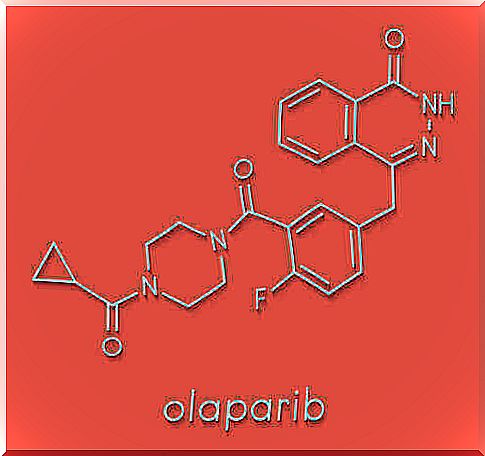Description And Characteristics Of Olaparib

Today we are going to discuss the features of olaparib. Olaparib is a chemotherapy drug for the treatment of various cancers in advanced stages.
The brand name is Lynparza, and it was originally developed by AstraZeneca, a pharmaceutical company. There are several pharmaceutical forms of olaparib and doctors prescribe one or the other depending on the disease and its stage.
For example, the tablet format is a type of monotherapy for the treatment of adult patients with high-grade epithelial ovarian and fallopian tube cancer. It also works in relapsed patients undergoing platinum-based therapy.
Olaparib capsules are for the treatment of cancers with a mutated gene: BRCA. This gene plays an important role in the development of cancer, especially breast and ovarian cancer.
Remember that olaparib capsules and tablets are not interchangeable due to the differences in dosage and bioavailability of each formulation. The side effects that these formulations may cause in patients taking them include:
- Nausea
- Diarrhea
- Fatigue
- Neutropenia
- Thrombocytopenia
- Dizziness
Characteristics of olaparib: mechanism of action

This drug inhibits the human enzymes responsible for proper DNA repair: PARP. In vitro samples showed that it inhibits the growth of selected tumor cell lines and also tumor growth. It can be used as monotherapy or in combination with previously established chemotherapy.
When olaparib binds to these DNA-associated enzymes, it prevents DNA repair through a series of reactions. In healthy cells, this repair requires those that have the BRCA-1 and BCRA-2 genes to function properly.
Alternative error-prone repair pathways begin to be activated (link is spanish), leading to increased genomic instability in tumor cells that have a malfunction in these proteins.
Genomic instability can reach unacceptable levels after several rounds of replication of these tumor cells. As a result, the cancer cells die. This is because they show a high amount of DNA damage compared to normal cells.
Administration of olaparib after platinum treatment was shown to be beneficial in studies involving patients who had a BRCA mutation and therefore lacked a functioning BRCA protein. The result was a delay in tumor progression and an increase in overall survival versus platinum treatment alone (Spanish link).
Characteristics of olaparib and BRCA

As we mentioned above, olaparib is mainly used to treat breast cancer, although it can be used to treat other cancers as well. This is especially true if there are advanced neoplasms or metastatic ovarian cancer.
As for breast cancer, one of the most common molecular events in triple-negative breast tumors is the alteration of the function of the BRCA protein. This oncological variety is one of the most aggressive for women.
More than 80% of patients with a mutation in the BRCA1 gene have triple-negative breast cancer. About 15% of patients with ovarian cancer and 5% of those with breast, pancreatic, or prostate cancer inherited BRCA1 or BRCA2 mutations.
Olaparib is a PARP inhibitor, which are proteins that help repair damaged DNA. Since BRCA mutations can also impede DNA repair, similar inhibition of this process with olaparib can lead to cancer cell death.
Researchers evaluated the efficacy of olaparib in monotherapy and in combination with other chemotherapy drugs in several phase II clinical trials (Spanish link). Its effectiveness in monotherapy in patients with advanced breast cancer who had previously been intensively treated also had a higher objective response.
Conclusion
Finally, olaparib represents a novel approach as antineoplastic treatment through PARP inhibition. In fact, it may solve an unmet need in patients with BRCA-associated cancer.
The treatment is not easy, because these neoplastic diseases are quite advanced. They require a combination of therapies and good patient follow-up. Ideally , there is an oncology advisory group that is always attentive to the patient’s needs and considers all factors.









